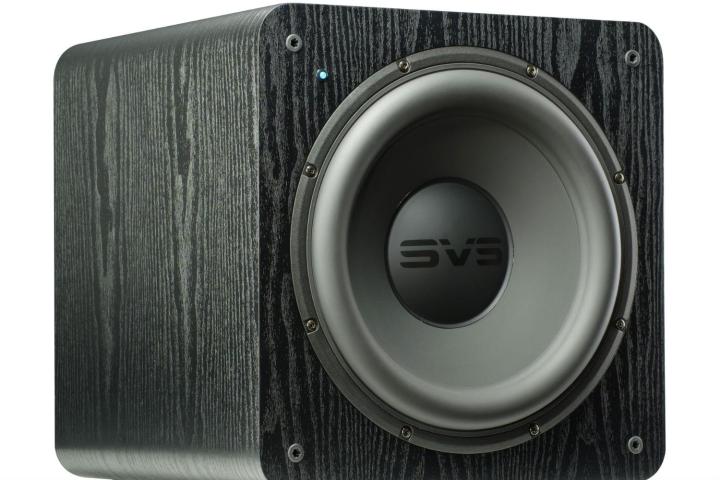
Here’s our full SVS SB-2000 review.
SVS, one of our favorite purveyors of big, beautiful bass, unveiled two all-new subs at CES last week, the SB-2000 and the PB-2000. Developed specifically to play nice with SVS’s not-too-subtly titled Sledge STA-500D amplifier, the subs were completely redesigned from the ground up to provide room-shaking sound for a price that won’t blow your entire home theater budget.
The crown jewel of both subs is SVS’ brand new 12-inch 2000 series driver. The driver boasts a host of eardrum-warbling specs, including high-grade ferrite magnets, an FEA optimized motor for “nearly distortion free performance,” a reinforced Nomex spider to keep the cone in check, and a long throw surround and integrated tinsel leads for durability over the long haul. SVS went through 20 driver prototypes, each with over 100 hours of full throttle abuse before the final product was approved.
The built-in Sledge STA-500 amp pushes 500 watts RMS and 1100 watts of peak power, and it includes a suite of DSP for phase, gain, volume control, and multiple filters to shape the sound. And for audio geeks who want to get their hands dirty (or custom installers who, you know, know what they’re doing), there’s even a limiter/compressor with fully adjustable attack and release times and “compression parameters” to allow the shaping of transients to suit their heart’s desire.
Let’s take a quick look at the available specs for both new subs below, shall we?
SB-2000 ($700)
The SB-2000 is a compact 14.2-inch cube, weighing in at 35 lbs. SVS claims a 19-240Hz frequency response for the unit, pounding out of a fully sealed cabinet. SVS doesn’t list connection specs for the speaker other than to say its connection options are “comprehensive and flexible” for use with any home theater setup. Given our experience with the brand, we’re inclined to believe it.
PB-2000 ($800)
The larger of the two siblings, the PB-2000 is housed in a ported cabinet that weighs 66 lbs, and sits 20.9-inches long, 17.3-inches high, and 22-inches wide. The frequency response is claimed to reach down to 17Hz, and tops out at 240Hz like its baby brother. A “high-flow” front-firing port boasts inner/outer port flares to help reduce port noise.
We’ll let you know if the new lineup provides the same musical-yet-monstrous bass we’ve come to expect from SVS as soon as we get the chance to hear them for ourselves. But if you don’t want to wait, you can order either the SB-2000 or the PB-2000 right now.
Editors' Recommendations
- KEF just let the dogs out with its new KC92 and Kube MIE subwoofers
- PSB’s new SubSeries BP8 subwoofer pushes 500 watts of pure rumble
- SVS responds to micro subwoofer ‘impostors’ with its $800 3000 Micro


